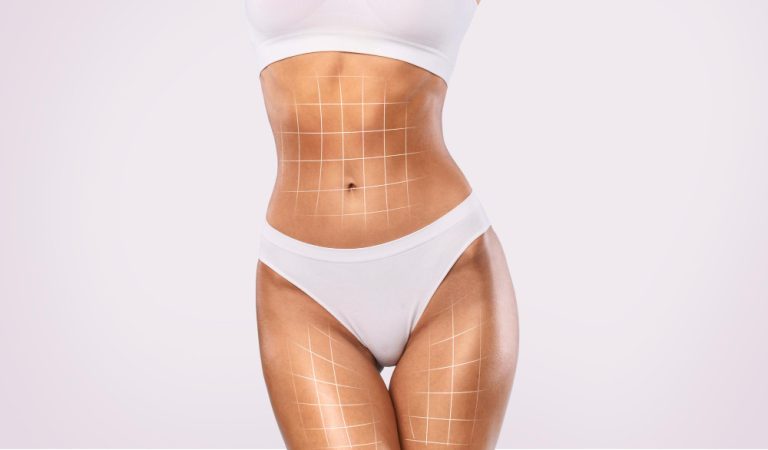Walk into any open-concept home and you’ll witness a peculiar phenomenon: people instinctively gravitating toward the edges. Not because the center isn’t functional, but because something about vast, undefined space feels… unmoored.
We’ve been conditioned to think that open floor plans equal better living. Bigger is better, fewer walls mean more freedom, and expansive spaces create expansive possibilities. But here’s what the design magazines don’t tell you: humans actually crave definition within openness.
The Great Open-Concept Paradox
The modern love affair with open-concept living has created homes that look stunning in photographs but often feel challenging to inhabit. These spaces promise flexibility and flow, but they frequently deliver something unexpected: a kind of spatial overwhelm that leaves us feeling like we’re camping in our own living rooms.
Sometimes we operate on autopilot without realizing it. When faced with a large, undefined space, we unconsciously push furniture against walls, cluster seating into tight groupings, and create islands of comfort in seas of emptiness. It’s our brain’s efficient shortcut – a way to impose familiar patterns on unfamiliar vastness.
But this defaulting strategy often leaves us with spaces that feel fragmented rather than flowing, disconnected rather than unified. We end up with beautiful square footage that somehow doesn’t translate into beautiful living.
Rugs as Invisible Walls
Here’s where washable rugs become something more than floor coverings – they become invisible architecture. They’re the soft walls that create definition without division, the gentle boundaries that organize space without confining it.
Think of washable rugs as stage directors for your living spaces. They don’t steal the show, but they orchestrate how the performance unfolds. A strategically placed rug can transform a cavernous great room into a collection of intimate conversation areas, each with its own purpose and personality.
The magic happens in the blocking – not the theatrical kind, but the spatial kind. When you use rugs to block large areas, you’re creating invisible rooms within rooms, defined spaces that maintain the openness while providing the psychological comfort of boundaries.
The Conversation Cluster: Creating Intimacy in Vastness
Large living areas often suffer from what designers call “shouting distance syndrome” – spaces so expansive that normal conversation requires raised voices. A well-placed washable rug can cure this immediately.
Picture your oversized living room. Instead of pushing all seating against the perimeter walls (the default response to overwhelming space), pull furniture toward the center and anchor it with a generous rug. Suddenly, you’ve created a conversation cluster – an intimate gathering space that feels intentional rather than accidental.
The washable aspect becomes crucial here because this central placement puts your rug in the path of maximum traffic flow. It’s where coffee gets spilled during animated discussions, where pets claim their favorite spots, where children naturally gravitate for floor time. Traditional rugs in this position become stress points – beautiful but fragile islands requiring constant vigilance.
Washable rugs eliminate this anxiety entirely. That gorgeous oversized rug that perfectly defines your seating area can handle whatever life throws at it, then refresh completely in your washing machine.
The Dining Zone: Floating Formality
In open-concept spaces, dining areas often feel like afterthoughts – furniture groupings that exist in the shadow of more dominant living spaces. A strategically sized washable rug can transform this dynamic entirely.
Instead of letting your dining area blend invisibly into the larger space, use a rug to create what designers call a “floating room” – a defined area that feels separate while remaining connected. The rug becomes the foundation that says “this is where we gather for meals” even when there are no walls to reinforce the message.
The blocking effect works on multiple levels. Visually, the rug creates a clear boundary that helps organize the overall space. Psychologically, it provides the definition that makes the dining area feel intentional rather than incidental. Practically, it protects your flooring from the inevitable spills and scrapes that accompany dining.
The Reading Retreat: Carving Out Solitude
Large living spaces often struggle with providing options for solitude within sociability. Everyone needs a space to retreat without retreating entirely – a spot to read, think, or simply observe the household’s rhythm from a comfortable distance.
A washable rug can create this retreat by defining a quiet corner or window nook as distinctly separate from the main social areas. It’s not about building walls – it’s about using textile boundaries to signal “this space has a different energy.”
This kind of spatial blocking requires confidence in your design choices. You’re essentially saying that not every square foot needs to serve the same function, that variety within openness creates richness rather than confusion.
The Play Zone: Containing Chaos with Style
For families with children, large living areas present a particular challenge: how to accommodate the reality of toys, games, and kid-centered activities without letting them overwhelm the entire space.
A washable rug can create a defined play zone that contains the beautiful chaos of childhood while maintaining the adult aesthetic of the broader space. It’s a boundary that children intuitively understand and respect – their designated territory within the family’s shared domain.
The washable element becomes essential here. Play zones are ground zero for art projects, snack time, and the general wear that comes with young lives in motion. A rug that can survive finger paints, juice boxes, and the occasional craft disaster becomes a practical foundation for family life.
The Workflow Highway: Directing Traffic Flow
Large spaces often suffer from poor traffic flow – unclear pathways that lead to awkward navigation and wasted square footage. Washable rugs can function as subtle traffic directors, creating visual pathways that guide movement through space.
This is invisible architecture at its most sophisticated. A runner that connects your entryway to your kitchen doesn’t just protect high-traffic flooring – it creates a visual highway that organizes movement through your space. Secondary rugs can branch off this main pathway, creating logical stopping points and gathering areas.
The blocking effect here is more about flow than boundaries. You’re using rugs to suggest how space should be navigated, creating an intuitive logic that makes large areas feel more manageable and purposeful.
The Seasonal Stage: Flexible Definition
One of the most powerful aspects of using washable rugs for spatial blocking is the flexibility it provides. Unlike permanent architectural elements, rugs can be repositioned, replaced, or removed as your needs evolve.
Summer gatherings might call for a large central rug that encourages casual floor seating and relaxed sociability. Winter months might favor smaller, more intimate groupings that create cozy conversation nooks. Holiday entertaining could inspire temporary reconfigurations that accommodate larger groups.
This seasonal flexibility transforms your large living space from a static stage into a dynamic environment that can adapt to life’s changing rhythms.
Breaking the Perimeter Prison
Recognizing when you’re ‘defaulting’ to perimeter furniture placement can be the first step toward more intentional space planning. It’s about creating space between automatic responses and conscious choices, between familiar patterns and new possibilities.
Those comfortable patterns of wall-hugging furniture can become invisible walls themselves, blocking the full potential of your living space. Small interruptions to our usual spatial habits – like pulling furniture toward the center and anchoring it with a beautiful rug – can lead to remarkable transformations in how we experience our homes.
The Psychology of Defined Openness
There’s something profound that happens when large spaces receive gentle definition. Instead of feeling overwhelmed by vastness, we begin to feel oriented within it. Instead of defaulting to the edges, we’re drawn to inhabit the center. Instead of feeling like we’re camping in our own homes, we feel like we’re truly living in them.
Washable rugs make this psychological shift practical. When your space-defining elements can handle the wear and tear of actual living, you’re free to create the spatial relationships that serve your life rather than protect your belongings.
The art of invisible architecture isn’t about hiding space – it’s about revealing its potential. It’s about using soft boundaries to create hard functionality, textile elements to organize spatial experiences, and washable practicality to enable beautiful living.
In large spaces where definition can feel elusive, washable rugs offer something precious: the power to create rooms within rooms, intimacy within openness, and intentional living within architectural vastness. They prove that the best boundaries are often the ones you can’t see – they’re simply felt, experienced, and lived within.








